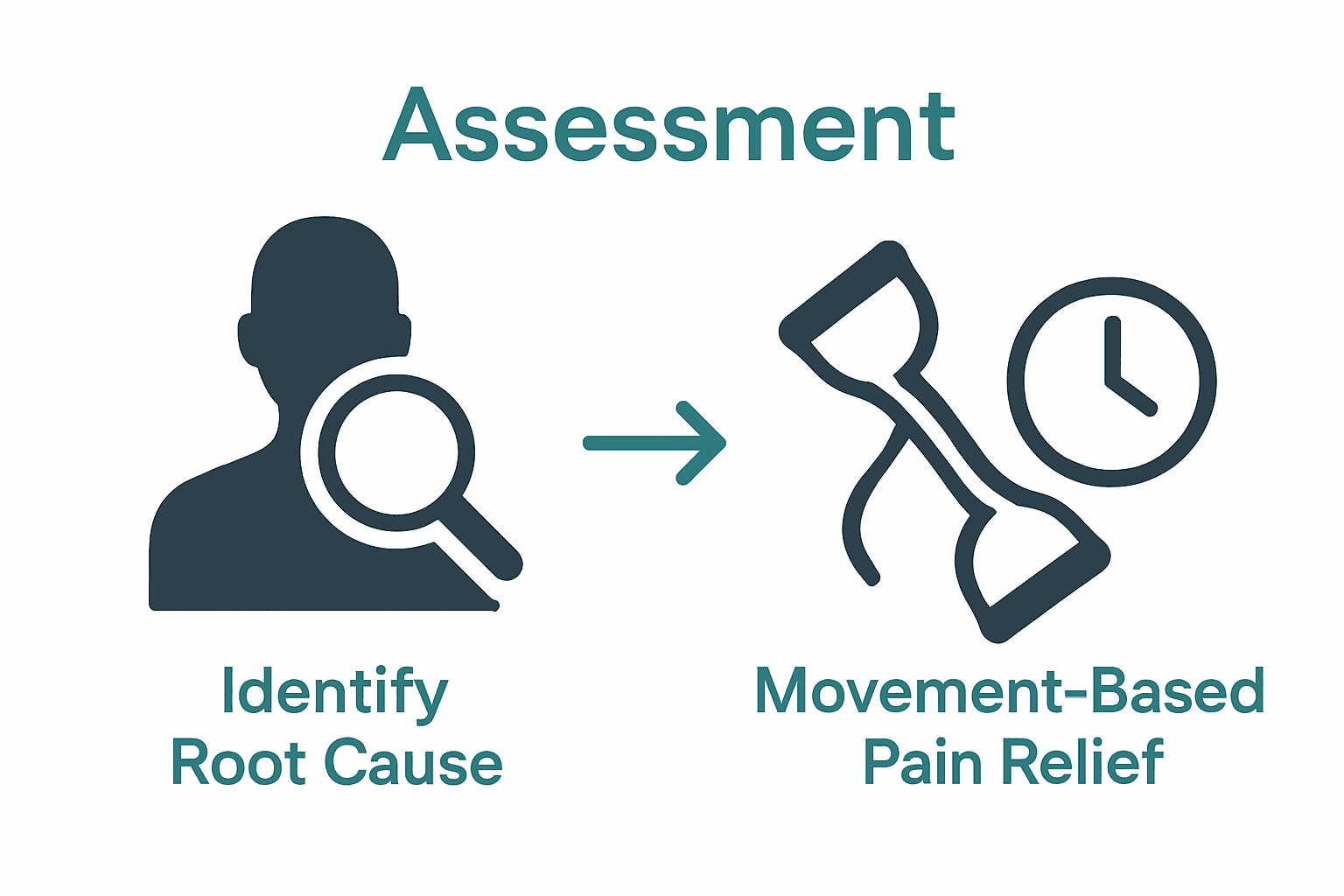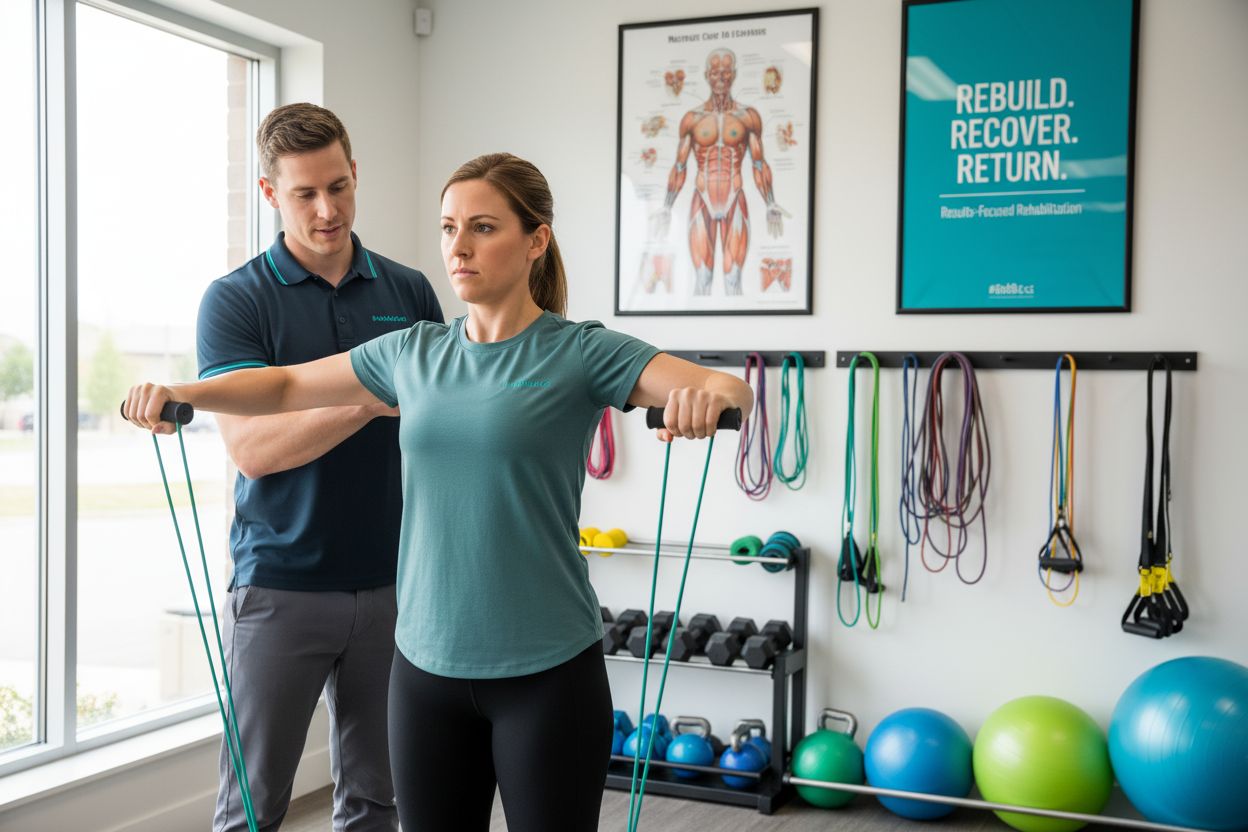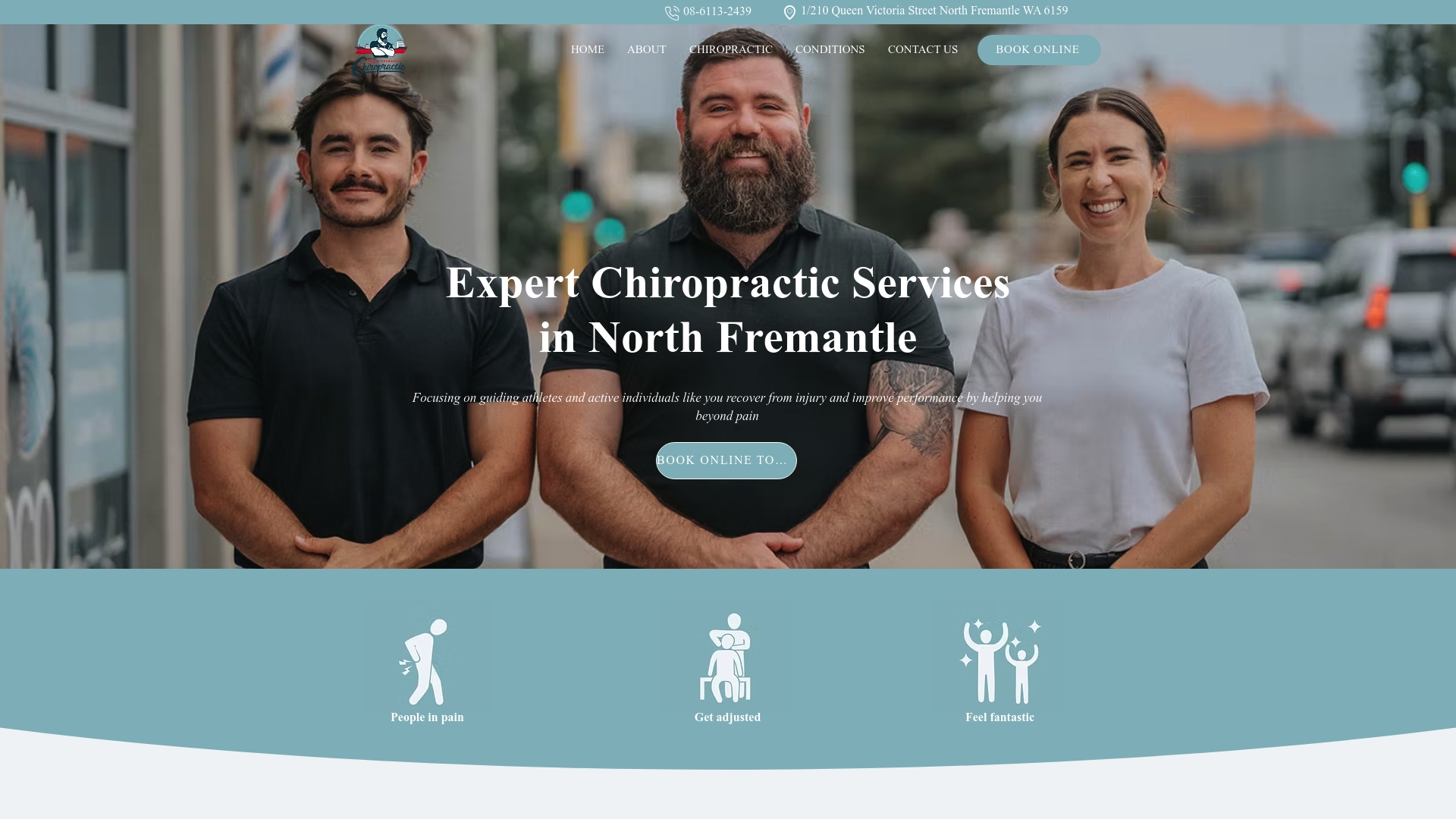How to Manage Shoulder Pain Naturally for Active Lifestyles
- Dr Nathan Bridger

- Oct 17
- 8 min read

Shoulder pain affects up to one in four adults at some point, making even simple tasks a daily challenge. Ignoring the discomfort can turn a minor ache into long-term injury, impacting work, sleep and activities you love. Understanding proven solutions is your first step toward lasting relief and strong, healthy shoulders that keep up with your busy life.
Quick Summary
Key Point | Explanation |
1. Identify the root cause of pain | Conduct a systematic self-assessment to understand the source of your shoulder discomfort. |
2. Use movement-based pain relief strategies | Apply cold and heat therapy while incorporating gentle mobility exercises for effective pain management. |
3. Incorporate targeted stretching | Engage in dynamic stretching multiple times weekly to enhance shoulder flexibility and prevent injuries. |
4. Focus on building shoulder strength | Use resistance bands and bodyweight exercises to gradually strengthen shoulder muscles and improve stability. |
5. Monitor progress consistently | Keep a weekly journal to track pain levels and mobility, adjusting your routine as necessary for optimal recovery. |
Table of Contents
Step 1: Identify the Root Cause of Shoulder Pain
Understanding the source of your shoulder pain isn’t just about eliminating discomfort – it’s about reclaiming your active lifestyle and preventing future issues. Learn more about our specialised shoulder pain assessment to get started.
According to Healthdirect Australia, shoulder pain isn’t a straightforward problem. Your pain could stem from multiple interconnected factors like muscle weakness, overuse, poor posture, or underlying structural issues. Think of your shoulder like a complex machine with numerous moving parts that can potentially go wrong.
To effectively identify your shoulder pain’s root cause, start with a systematic self assessment. Pay attention to when the pain occurs most frequently: Does it happen during specific movements? After prolonged desk work? When you’re lifting weights or playing sports? These patterns are crucial clues.
Note the specific characteristics of your pain. Is it a sharp stabbing sensation or a dull persistent ache? Can you pinpoint the exact location or does it radiate? Is the pain constant or intermittent? Each detail provides valuable information about potential underlying conditions.

Pro Tip: Keep a pain journal for two weeks documenting activities, intensity, and duration of shoulder discomfort. This record becomes an invaluable diagnostic tool for healthcare professionals.
While self assessment is important, professional evaluation remains critical. Complex shoulder issues often involve interactions between muscles, tendons, joints and even referred pain from your neck or spine. A professional can conduct precise diagnostic tests to uncover what’s really happening beneath the surface.
Remember: Accurate identification is your first step towards effective treatment and getting back to the activities you love.
Step 2: Apply Movement-Based Pain Relief Techniques
Pain relief isn’t about stopping movement – it’s about smart, strategic rehabilitation that keeps you active and promotes healing. Explore our movement-based rehabilitation approach to understand how we help athletes and active individuals recover.
According to Healthdirect Australia, managing shoulder pain requires a nuanced strategy that balances rest with careful movement. The key is understanding how to apply targeted techniques that reduce inflammation while maintaining shoulder mobility.
Start with strategic temperature therapy. In the initial days following an injury or intense pain, apply cold packs for 15 to 20 minutes to reduce inflammation and numb the area. After the first 48 to 72 hours, switch to heat packs to relax muscles and improve blood circulation. This alternating approach helps your body’s natural healing mechanisms.
Gentle mobility exercises become crucial in your recovery. Begin with pendulum swings where you lean slightly and let your affected arm swing loosely like a pendulum. This movement helps reduce stiffness without placing significant strain on the shoulder joint. Perform these for about 30 seconds every few hours.
Pro Tip: Move within your pain threshold. If an exercise causes sharp or intense pain, stop immediately and consult a professional.
As recommended by the Better Health Channel, gradually reintroduce range of motion exercises. Wall slides are excellent for this purpose. Stand facing a wall and slowly slide your hand up the wall, maintaining a comfortable stretch. Stop when you feel mild tension but before pain begins.
Remember that recovery is not linear. Some days will feel better than others. The goal is consistent gentle movement that promotes healing without overwhelming your shoulder’s current capacity.
Your next step involves understanding how to progressively rebuild strength and prevent future injuries.
Step 3: Integrate Targeted Stretching and Mobility
Targeted stretching goes beyond simple movements it becomes your strategic approach to rebuilding shoulder resilience and preventing future injuries. Discover our personalised mobility assessment techniques to support your recovery journey.
According to Get Active Victoria, integrating flexibility training can dramatically improve your overall physical performance. Aim for 2 to 3 mobility sessions weekly to enhance joint range of motion and support long term shoulder health.
Start with gentle shoulder rotations. Stand with feet shoulder width apart and slowly rotate your affected arm in controlled circular motions. First clockwise, then counterclockwise. These movements help restore natural joint mobility while signalling your nervous system to relax surrounding muscles.
Incorporate dynamic stretches recommended by SafeWork NSW. Begin with neck stretches where you slowly tilt your head side to side, creating gentle tension without pushing into pain. Follow this with side bends that help release tension across your upper back and shoulder regions.
Pro Tip: Always warm up before stretching. Light movements like arm swings or walking in place prepare your muscles and reduce injury risk.
Progress to more advanced mobility work like wall angels. Stand with your back against a wall and slowly move your arms up and down while maintaining contact with the wall. This exercise helps restore proper shoulder blade mechanics and improve overall shoulder function.
Remember that consistency trumps intensity. Short daily mobility work is more beneficial than sporadic intense sessions. Listen to your body and progress gradually.
Your next step involves understanding strength training strategies that complement your mobility work.
Step 4: Build Shoulder Strength and Resilience
Rebuildling shoulder strength isn’t about lifting massive weights it’s about strategic muscle development that restores your body’s natural balance and support system. Check out our comprehensive strength rehabilitation program to understand how we approach recovery.
According to the Australian Institute of Fitness, effective shoulder strengthening requires a balanced approach that targets both front and back muscle groups. The goal is creating joint stability through precise controlled movements rather than aggressive loading.
Begin with resistance band external rotations. Hold a light resistance band with your elbow tucked against your side and slowly rotate your forearm outward. This exercise specifically targets the rotator cuff muscles that are crucial for shoulder stability. Start with 10 repetitions and gradually increase as your strength improves.
Healthdirect Australia emphasises that strengthening exercises are fundamental to physiotherapy rehabilitation. Incorporate scapular retractions where you squeeze your shoulder blades together while maintaining a neutral spine. These movements help restore proper muscle coordination and joint mechanics.
Pro Tip: Progress slowly. Pain is your body’s warning signal. If an exercise causes discomfort stop and reassess your technique or resistance level.
Introduce bodyweight exercises like wall push ups. These allow you to build strength with minimal joint stress. Place your hands against a wall at shoulder height and perform controlled push movements. Focus on maintaining a straight body line and engaging your core.
Remember that cross training and adequate rest are as important as the exercises themselves. Alternate your shoulder work with other muscle groups and ensure you have recovery days between strength sessions.

Your final step involves creating a sustainable long term strategy to maintain shoulder health and prevent future injuries.
Step 5: Monitor Progress and Adjust Your Routine
Recovery is a dynamic journey that requires consistent assessment and strategic adjustments. Access our personalised tracking tools for shoulder rehabilitation to support your recovery process.
According to Healthdirect, monitoring your shoulder pain progression is crucial. Not all recovery paths are linear some require careful recalibration of your approach. Pay attention to subtle changes in pain intensity frequency and mobility.
Start by creating a weekly progress tracking system. Use a simple journal or digital app to record key metrics such as pain levels range of motion and specific exercise performance. Rate your pain from zero to ten and note any movements that trigger discomfort or improvements.
The Better Health Channel emphasises that most shoulder pain improves with conservative management. However understanding when to seek professional guidance is equally important. Watch for specific warning signs like persistent pain that does not improve with rest increased swelling or reduced range of motion.
Pro Tip: Take weekly photos or videos of your mobility exercises. Visual documentation can help you objectively track improvements that might feel subtle day to day.
Schedule regular check ins with a healthcare professional every four to six weeks. These assessments help validate your progress and provide expert guidance on adjusting your rehabilitation strategy. Professional insights can help you avoid potential setbacks and optimize your recovery trajectory.
Remember that healing is not about perfection but consistent progressive improvement. Some weeks will feel more challenging than others. Stay patient and trust the process.
Your final objective is developing a sustainable long term approach to shoulder health that keeps you active and pain free.
Here’s a summary of the five key steps to managing shoulder pain:
Step | Focus Area | Key Activity |
1 | Identify root cause | Self assessment Pain journal |
2 | Movement-based pain relief | Cold/heat packs Gentle mobility |
3 | Stretching & mobility | Rotations Dynamic stretches |
4 | Build strength | Resistance bands Wall push ups |
5 | Monitor progress | Tracking symptoms Expert check-ins |
Ready to Move Stronger and Live Pain-Free?
If shoulder pain is keeping you from training, parenting, or simply enjoying life on your terms, it is time to take real action. You have learned how spotting the root cause and using strategic mobility, strength, and movement-based pain relief can set you on the path to recovery. Now imagine what you could achieve with expert guidance at every step — and genuine support tuned to active Aussie lifestyles.

At North Fremantle Chiropractic, we help legends like you get back to what you love without guessing games or endless setbacks. Our hands-on team blends elite sports-focused chiropractic care with proven strength and conditioning. Discover our personalised shoulder pain assessment and see how our movement-first approach puts you in control. Book your first visit now and start building resilience where it matters most. Don’t wait for pain to dictate your day. Take your first confident step toward natural relief and rediscover your full potential today.
Frequently Asked Questions
How can I identify the root cause of my shoulder pain?
Understanding the root cause of your shoulder pain begins with a systematic self-assessment. Keep a pain journal for two weeks, noting when pain occurs, its intensity, and any related activities to help pinpoint triggers.
What movement-based techniques can I use to relieve shoulder pain naturally?
To relieve shoulder pain, start with temperature therapy and gentle mobility exercises. Apply cold packs for 15-20 minutes initially, followed by heat packs after 48-72 hours, and perform pendulum swings for about 30 seconds every few hours.
What stretching exercises will help improve shoulder mobility?
Incorporate targeted stretching to enhance shoulder mobility, starting with gentle shoulder rotations and dynamic neck stretches. Aim for 2-3 mobility sessions weekly to support long-term shoulder health and flexibility.
How can I build shoulder strength while managing pain?
Focus on controlled strength exercises like resistance band external rotations and scapular retractions. Begin with 10 repetitions and gradually increase as your strength improves, incorporating bodyweight exercises like wall push-ups for minimal joint stress.
How do I monitor my recovery progress effectively?
Develop a weekly tracking system to record pain levels, range of motion, and exercise performance. Use a simple journal to document changes and assess improvements consistently over a few weeks to guide your recovery strategy.
What should I do if my shoulder pain doesn’t improve?
If your shoulder pain persists despite home management efforts, schedule regular check-ins with a healthcare professional for evaluation. Typically, consult a professional if you experience increased swelling or a reduction in range of motion.
Recommended

Comments